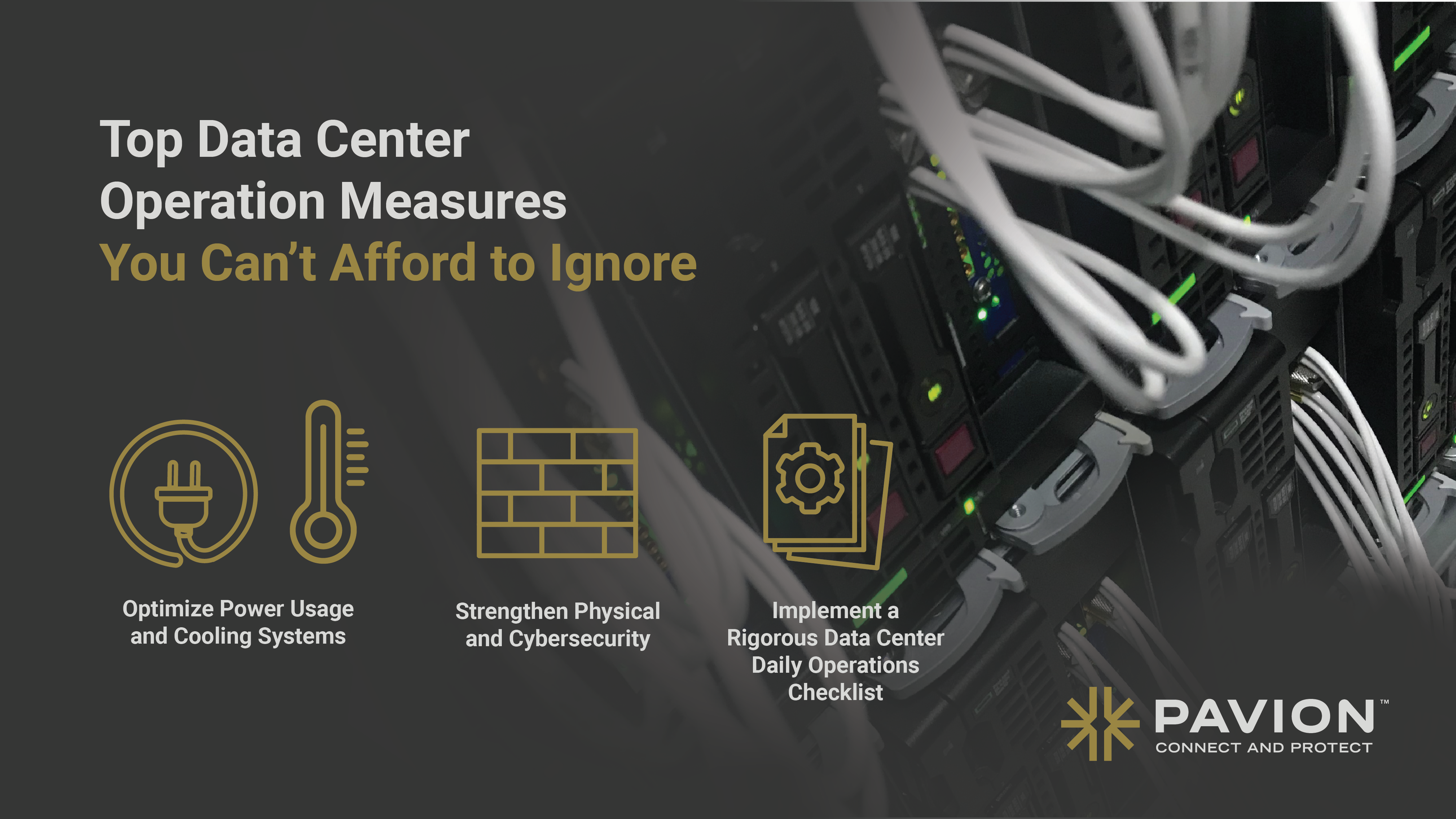
Top Data Center Operation Measures You Can’t Afford to Ignore
In today’s always-connected world, the demand for data center and network operations has never been greater. Businesses rely on high-performance infrastructure to manage data securely, efficiently, and without interruption. That’s why your data center operations program must include robust measures that optimize reliability, reduce downtime, and control data center operating costs.
Whether you’re building from scratch or refining your current setup, here are the top data center operation measures you simply can’t afford to ignore.
1. Implement a Rigorous Data Center Daily Operations Checklist
A well-structured data center daily operations checklist is the foundation for smooth performance. It should include tasks like:
- Verifying environmental conditions (temperature, humidity, airflow)
- Inspecting physical infrastructure (cabling, racks, power units)
- Reviewing server logs and alerts
- Ensuring backup systems are operational
- Confirming physical security protocols are enforced
Routine checks reduce the risk of sudden failures and keep operations running predictably.
2. Prioritize Preventive Maintenance and Monitoring
One of the biggest problems for data centers is unplanned downtime due to preventable equipment failure. Preventive maintenance—like regularly scheduled HVAC and UPS inspections—extends hardware life and catches potential issues early.
Use AI-driven monitoring tools to detect abnormalities before they impact operations. Real-time alerts can help identify main sources of failure in a data center such as power issues, cooling failures, or network congestion.
3. Strengthen Physical and Cybersecurity
What is the major concern of a data center? For most operators, it’s security—both physical and digital. Without the right access controls, surveillance systems, and threat detection technologies, data centers remain vulnerable to breaches and disruptions.
Modern security strategies should include:
- Biometric or multi-factor physical access control
- 24/7 surveillance with remote monitoring
- Network firewalls and intrusion detection systems
- Security information and event management (SIEM)
Check out our data center security solutions to learn how your operations can stay one step ahead of evolving threats.
4. Optimize Power Usage and Cooling Systems
Energy efficiency plays a major role in reducing data center operating costs. Cooling systems often account for over 40% of total energy use. Consider the following strategies:
- Implement hot/cold aisle containment
- Upgrade to energy-efficient CRAC units
- Use sensors and intelligent PDUs for real-time power monitoring
Investing in green energy or liquid cooling solutions may also help meet sustainability goals and improve operational efficiency.
5. Standardize Documentation and Operational Protocols
Clear documentation is a must for consistent data center operations. Every team member should have access to up-to-date protocols for disaster recovery, change management, and compliance.
Documenting every configuration, asset, and system workflow not only streamlines training but also makes audits faster and ensures compliance with industry standards like ISO 27001, HIPAA, and SOC 2.
6. Design for Redundancy and Resilience
A resilient data center includes redundant systems that keep operations running even when one component fails. Redundancy should be built into power, cooling, and networking systems.
A typical setup includes:
- Dual power supplies and UPS systems
- Redundant HVAC units
- Backup generators
- Secondary internet providers
This helps eliminate single points of failure, a key component of a data center infrastructure.
7. Train Staff and Maintain Operational Excellence
The best infrastructure is only as strong as the people managing it. Invest in ongoing training so your operations team understands the latest technologies, threat vectors, and emergency protocols.
A mature data center operations program also includes routine drills, post-incident reviews, and clear escalation paths for unexpected issues.
8. Prepare for Big Data Challenges
With the explosion of big data, capacity planning and resource management are more critical than ever. The four main problem areas of big data processing—volume, velocity, variety, and veracity—require dynamic and scalable systems.
Using automation and AI analytics helps your team handle increasing loads without sacrificing performance.
Ready to enhance your data center’s security and resilience?
Check out our data center security solutions!
Discover how we help organizations like yours strengthen infrastructure, reduce downtime, and protect critical data every day.


